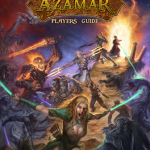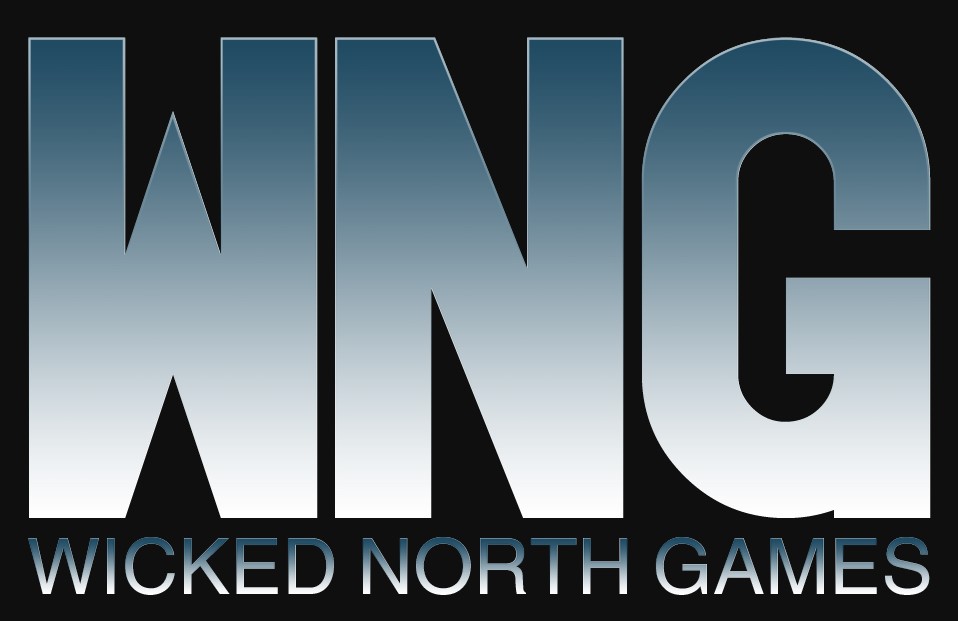 Our first game, Azamar, led us to understand the very basics of starting a company. We found that becoming a Limited Liability Company (LLC) made the most sense for protecting ourselves and for making Wicked North Games an official business entity. New Hampshire is a state where you don’t have to file taxes unless you make over 10,000 or more in profits, something we have never done to date.
Our first game, Azamar, led us to understand the very basics of starting a company. We found that becoming a Limited Liability Company (LLC) made the most sense for protecting ourselves and for making Wicked North Games an official business entity. New Hampshire is a state where you don’t have to file taxes unless you make over 10,000 or more in profits, something we have never done to date.
In so far as Azamar was concerned, we earned about $5,000 on Kickstarter. Kickstarter.com is an interesting entity. Essentially they provide some pull and publicity for anyone looking to pledge money for an “indie” project. They take 5% of proceeds, and Amazon payments takes another 5%. By the time you’re done, you’ve lost 10% of the raw pledges committed to you from pledgers. If you get $20,000 in pledges, you lose $2,000 to the various site provides and payment authorization services involved. If you make a million, you lose 100k. I think most pledgers are unaware of this process, and most people who have not run a Kickstarter project are definitely taken off guard by it. So you should know that going into it.
After you make your money, it takes 2-3 days after everyone’s payment clears for Amazon to push the money into whatever bank account is setup. You get the money and hopefully had a budget around the final amount -10%. If you didn’t you typically scramble around trying to figure out how to deal with that.
Role playing game publishing involves paying for distinst things. If you cannot write very well, you are paying for writing.
A typical writer of quality will charge 8-10 cents per word, depending on contract and project size, as well as demands of delivery.
If you cannot proofread well, you are paying for editing. Editing can run low, 5-6 cents per word, to high 18-20 cents per word. You get a lot of variance here since a lot of people want to get involved in proofreading, and you find the greatest area where people are willing to “beta test” your game and find errors. This is a good way to also discover faults in game mechanics. Hire a proofreader who is thorough and very familiar with your game system and mechanics or you run the risk of having big issues and blaring weaknesses.
Layout and design from an experienced designer will and should run about 3-400 dollars for every 100 pages or so. Less art means the layout artist can move more quickly, whereas a talented designer can help dictate where you need art most and help determine the look and feel best. We got extremely lucky with this during Westward. Azamar taught us to hire a professional in this regard. We tried doing it ourselves, and it just fell short because we used powerful tools to do something that really needed a professional touch.
Art is the most expensive part of making role playing games. Good art costs a lot, and it should. The talent and experience required to draw what you are imagining is rare, and doing it consistently and with specific fervor is even more difficult. Amazing cover art should run $1250 and up. If you get amazing cover art for less than $1600, you are getting a deal. Internal book art should get priced based on B&W vs. Color. You should get familiar with various art styles and methods, as some methods take less time and effort, and some take more. Most amazing artists are easy to spot and hard to afford. If you form a personal relationship with any illustrator, you are probably the luckiest RPG developer on Earth. Chances are good you can get lots of amazing art at a fraction of what you should pay. We hate you.
In total, Azamar ran an art budget of around $9,300. As you can tell, this put us negative in terms of the Kickstarter mentioned earlier. We got a very limited run of books printed for Azamat from a local printer. It cost us around $2500 for printing with a very local printer. We had soft and hard cover versions made as parts of these printing costs, with 50 hard cover books, and 100 soft cover. Our Kickstarter for Azamar also involved some stretch goals like dice and character sheets. I will cover stretch goals further later, but DON’T DO THEM. Stretch goals are a terrible idea and they introduce the most risk into a large project. Everything in a table top RPG project should revolve around making the best product possible: great printing, great art, great layout, great editing, and great writing.
We printed our Azamar books for around 15 per book soft cover and 19 per book hard cover, with MSRPs of 20 and 30, respectively. This made distribution impossible without taking losses on both printed version. Distributors want to sell books, so they do so at reduced prices to retailers, typically 49% of your MSRP. That would be just below 10 for the soft cover and 15 for the hard cover. This is too late to start setting higher prices, because you’ve already printed your books. Don’t form exclusive contracts with distributors or anyone – it is bad business, and it is a bad way to get stuck in a contract you may not want to keep later.
Azamar taught us to raise the price of books on top of raising the production value. Azamar had a black and white interior, which was a nominal difference in price, but a significant difference in acceptance and adoption by gamers. These days everyone wants color. You should make your game books in color as much as possible. It is also worth the effort to contact a printer about the best quality books they can give you for the best price in the best dimensions. This is not always a dimension of 8.5 x 11, like many standard game books, so it is good to keep an open mind about it. Something we have not yet done.
After Azamar came out, we were probably around 5-6k in the hole, after production costs settled and everyone got paid. It was a sobering experience.
Part 1
